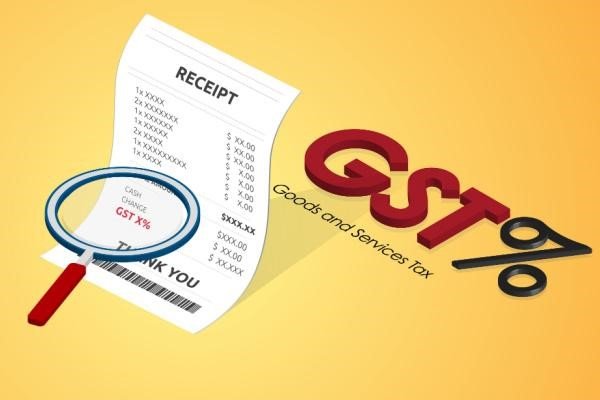GST
Reverse Charge Mechanism under GST

The Goods and Services Tax (GST) regime in India has delivered severa novel ideas to streamline the taxation tool. One such big idea is the Reverse Charge Mechanism (RCM), which shifts the prison duty of paying tax from the dealer to the recipient of products or services beneath sure targeted situations. This mechanism ambitions to decorate tax compliance and make sure that the government receives its due percentage of tax sales.
Understanding Reverse Charge Mechanism
The Reverse Charge Mechanism is a tax series mechanism in which the recipient of products or services, instead of the supplier, is chargeable for paying the applicable GST. This mechanism is applicable in conditions in which the company is both now not registered underneath GST or is positioned out of doors the taxable territory.
The cause at the back of the RCM is to save you tax evasion and make sure that the government does not lose out on tax revenue in times in which the dealer fails to comply with tax obligations. By placing the onus of tax price at the recipient, the authorities can correctly capture the tax revenue.
Applicability of Reverse Charge Mechanism
The Reverse Charge Mechanism is applicable in various conditions below the GST regime. These consist of:
- Goods or Services Procured from Unregistered Suppliers
If a registered taxable man or woman procures items or services from an unregistered provider, the RCM applies, and the recipient will become vulnerable to pay the GST at the transaction.
- Import of Services
In the case of import of services, where the dealer is located out of doors India, the RCM is relevant, and the recipient is required to pay the GST at the imported offerings.
Three. Specific Goods or Services
The government has notified certain instructions of merchandise or offerings where the RCM is applicable, regardless of the registration fame of the dealer. Examples encompass offerings furnished through a objects shipping enterprise employer, sponsorship offerings, and crook offerings, amongst others.
Compliance Requirements
For transactions falling under the RCM, the recipient is needed to comply with particular responsibilities:
- Self-Assessment of Tax Liability
The recipient is responsible for self-assessing the GST legal obligation on the transaction and paying the applicable tax to the government.
- Invoicing and Record-Keeping
The recipient must trouble a tax invoice for the transaction, despite the fact that the supplier has not raised one. Additionally, the recipient need to preserve right statistics of such transactions for audit features.
Three. Filing GST Returns
The GST paid below the RCM must be reported in the best section of the recipient’s GST move back, collectively with any Input Tax Credit (ITC) claimed at the transaction.
Benefits of Reverse Charge Mechanism
The Reverse Charge Mechanism gives numerous benefits to the authorities and the general GST tool:
- Increased Tax Compliance
By putting the tax criminal responsibility at the recipient, who is mostly a registered taxpayer, the RCM complements tax compliance and decreases the danger of tax evasion via unregistered or non-compliant suppliers.
- Broadening the Tax Base
The RCM guarantees that transactions regarding unregistered companies or imports of services are captured inside the GST internet, thereby broadening the tax base and growing revenue series.
Three. Simplified Monitoring
By moving the tax felony obligation to the recipient, the authorities can extra efficaciously display and audit the transactions falling below the RCM, as the recipients are registered taxpayers with established compliance records.
Challenges and Concerns
While the Reverse Charge Mechanism has its deserves, it additionally offers effective demanding situations and worries:
- Increased Compliance Burden
The RCM locations extra compliance duties at the recipient, which includes self-assessment of tax liability, issuing invoices, and keeping facts, that would boom the overall compliance burden.
- Cash Flow Implications
For transactions under the RCM, the recipient is needed to pay the GST prematurely, that may have implications on their cash waft and running capital manage.
- Reconciliation Complexities
Reconciling the input tax credit score rating claimed underneath the RCM with the output tax prison obligation may be a complicated method, in particular for agencies with numerous transactions falling below this mechanism.
Conclusion
The Reverse Charge Mechanism under GST is a essential tool for ensuring tax compliance and preventing sales leakages. While it has its benefits, it also affords effective worrying situations that agencies need to navigate carefully. Proper understanding of the RCM, its applicability, and compliance necessities is important for organizations to stay compliant with the GST regime. As the GST gadget maintains to conform, it’s miles anticipated that the government will address the concerns and simplify the implementation of the Reverse Charge Mechanism to further pork up the taxation system in India.

-

 Credit Card1 year ago
Credit Card1 year agoHow to Foreclose ICICI Credit Card EMI
-

 Saving Schemes2 years ago
Saving Schemes2 years agoHow to Check Sukanya Samriddhi Account Balance by SMS
-

 Credit Card1 year ago
Credit Card1 year agoHow to Unblock Credit Card ICICI
-

 Government Schemes2 years ago
Government Schemes2 years agoGovernment Schemes for Girl Child
-

 Saving Schemes2 years ago
Saving Schemes2 years agoHow to Open a Sukanya Samriddhi Account Online: A Step-by-Step Guide
-
Credit Card1 year ago
How to Check ICICI Credit Card Balance
-

 Credit Card1 year ago
Credit Card1 year agoHow to Change Address in ICICI Credit Card
-

 Government Schemes1 year ago
Government Schemes1 year agoHow to Apply for Ayushman Bharat Yojana: A Step-by-Step Guide